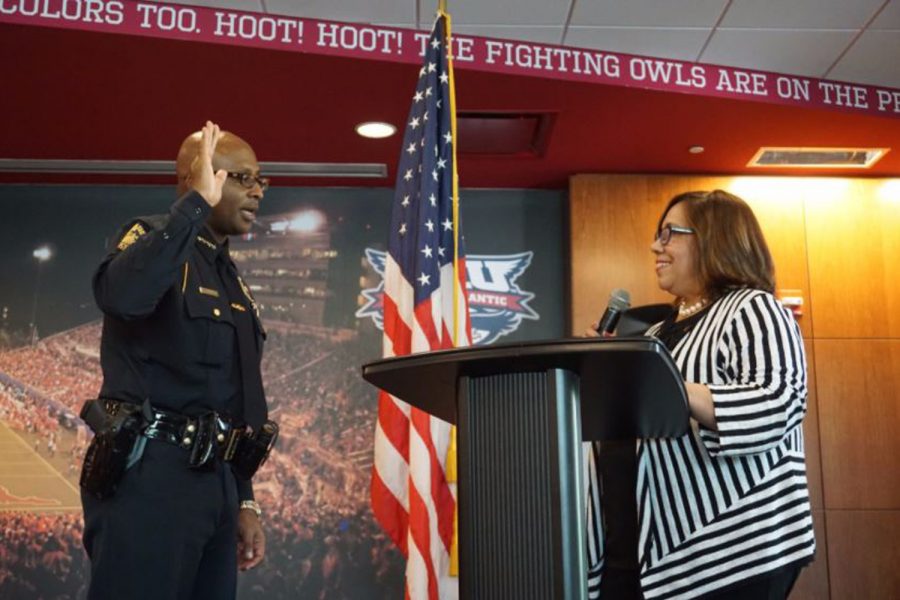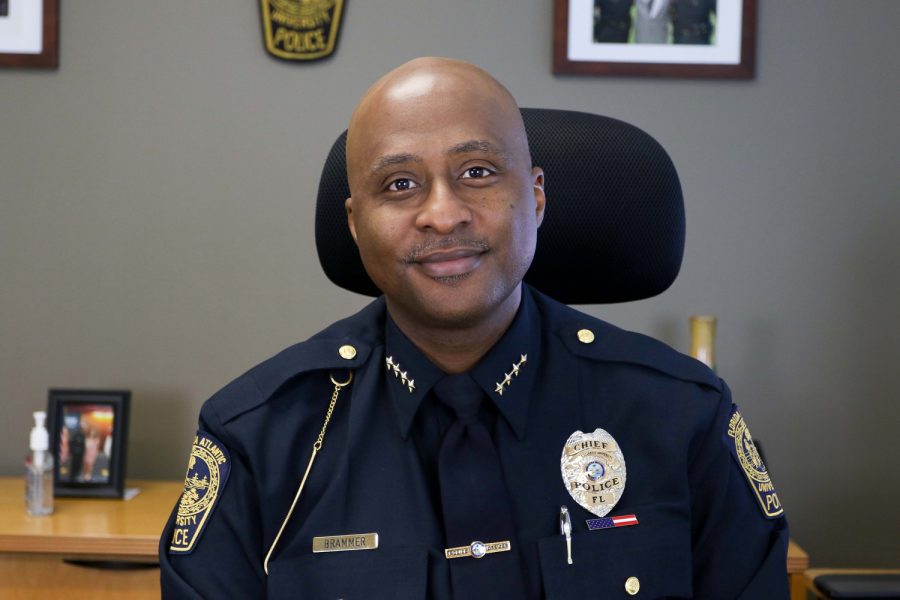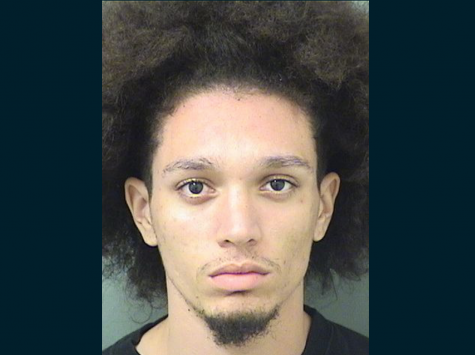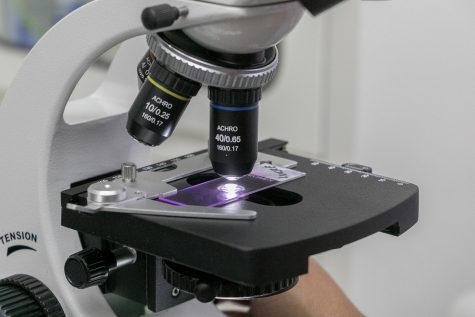Police Chief Sean Brammer talks why he became an officer, his goals for the department
Brammer was in his 20s studying civil engineering before he found his calling for law enforcement. Today, he works to ensure the safety of more than 30,000 college students
February 8, 2018
Fourteen years ago, then State Trooper Sean Brammer saved the life of a teenage boy after he collapsed in his chair at a Miramar, FL church service.
Two years later, he began his career protecting the students and faculty of FAU.
If you frequent on-campus events, you’ve likely seen Chief Brammer talking and taking selfies with students. Because, unlike city police, university police not only protect and serve. They also spend their time building relationships with students on campus.
Brammer said his department places value on its ability to maintain trust and respect with the student body.

“Police departments in an academic setting usually use the community policing model, which stresses community engagement,” Brammer said. “We have more community involvement on campus than a day-to-day police officer who works in the city. In the academic setting, I am able to put a handprint on someone’s life to help them become a better citizen instead of putting a handcuff on them.”
Before law enforcement, Brammer attended Miami-Dade Community College and aspired to be a civil engineer, focusing on environmental engineering. Then, his friend was hit by a drunk driver.
In an interview with the University Press last year, he described this event as one of the reasons he became an officer.
“She was in a coma for about two weeks and a little longer than 14 days. I think that was the turning point in my career. I said you know what, I need to be, I guess a grain of rice, that can tip the scale to see if I can go out there and help and save.”
In 2004, he was awarded “Trooper of the Year” by the Florida Highway Patrol for giving life-saving CPR to the teenager in Miramar, FL. And after nine years of patrolling Broward county highways, Brammer began his tenure at FAU in March 2006 as law enforcement captain.
Before being promoted to chief of FAU Police in July last year, he served as its interim chief for almost two years. As chief, he is responsible for overseeing the effectiveness of the Police Department, Parking and Transportation Services, and Security Technology Services on campus.
Since his swearing-in, he’s implemented various operations to increase public awareness of FAU police resources.
He launched an event called “Coffee with the Chief” in 2016, a program geared toward improving police-citizen relations and building relationships with the student body. He also maintains a mentoring program for the student organization Urban Male Initiative.
Outside campus grounds, the nation struggles with a stigma against police in an era where phone cameras can easily capture injustice. Police violence against black Americans is an ongoing issue, with police in some large cities killing black men more often than the national murder rate, according to a report by Mapping Police Violence.
So far, the Washington Post has tallied 68 people that have been fatally shot by police since the beginning of this year.
Brammer said his approach to policing at FAU is rooted in community engagement and respect.
“I am all about creating a culture of accountability, respecting each person you come into contact with and treating them the way you want to be treated.”
When asked why he chose law enforcement in an academic setting rather than a city department, he said:
“FAU actually chose me, and I’m very happy they did.”
Katrina Scales is the managing editor of the University Press. For information regarding this or other stories, email [email protected].
















